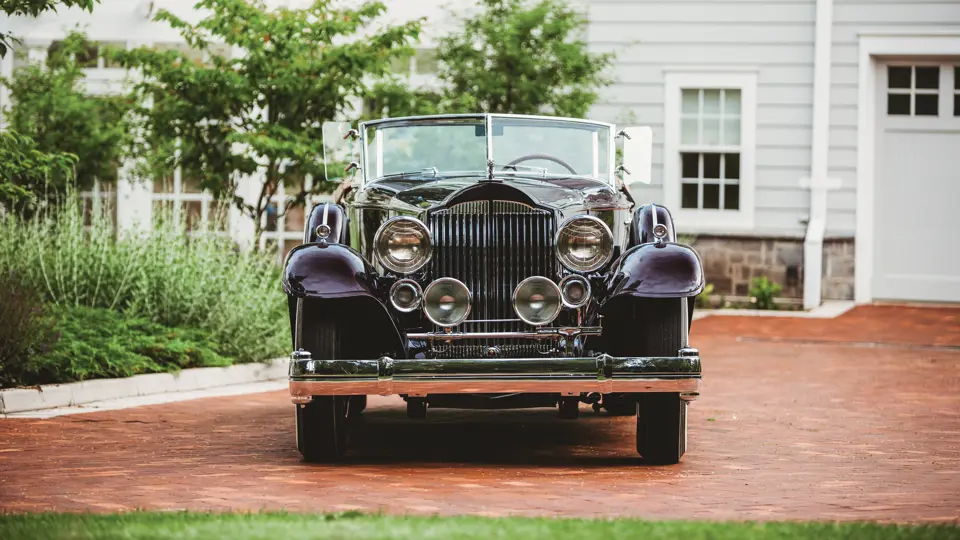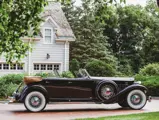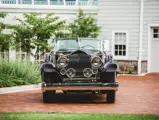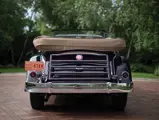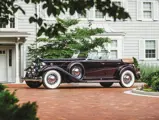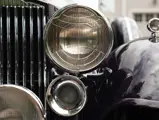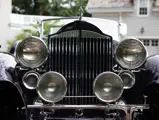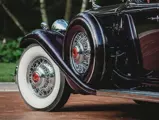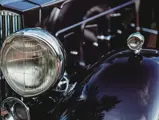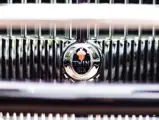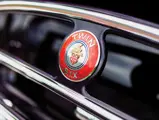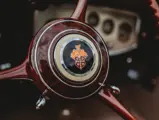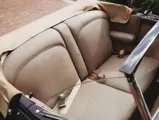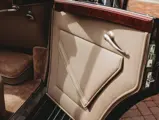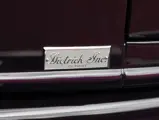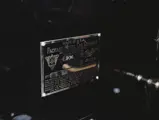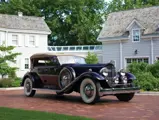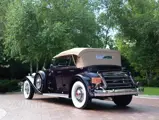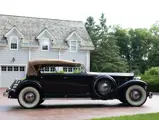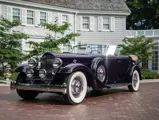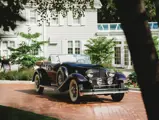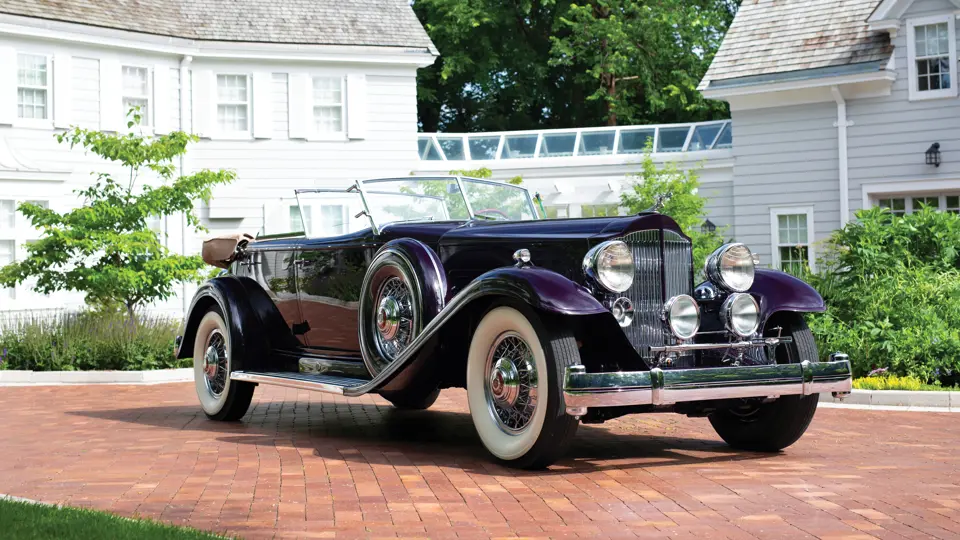
1932 Packard 906 Individual Custom Twin Six Sport Phaeton by Dietrich
{{lr.item.text}}
$750,000 - $950,000 USD | Not Sold
{{bidding.lot.reserveStatusFormatted}}
- Formerly owned by Jim Hull, Dick Dewey, Robert Bahre, Lee Herrington, and John O’Quinn
- Beautifully restored by RM Auto Restoration
- Winner of the Most Elegant Open Car at the 1997 Pebble Beach Concours d’Elegance
- Believed to be one of only two sport phaetons built in 1932
- Classic Car Club of America (CCCA) Full Classic
THE TWIN SIX: OUT OF AFRICA
Early Packard records did not survive to present day, but it is known that body 5494 was updated in 1938 by fitting the graceful original Twin Six sport phaeton body on a brand-new 1938 Packard Twelve chassis. In order to do this, the upper cowl and windshield assembly were fitted to the new 1938 cowl. At the same time, a more modern “torpedo”-style rear-body section was grafted on, and a set of up-to-date, pontoon-style Packard fenders were fitted.
The owner, possibly the original one, is believed to have been in the service of the U.S. Diplomatic Corps, and he accepted a posting to South Africa in the late 1930s. Accordingly, the Packard was shipped there, where it remained until 1967 or 1968, when its whereabouts came to the attention of longtime classic car enthusiast Jim Hull during a trip to Johannesburg. Hull brought the car back to the U.S. and enjoyed his unique Packard Custom Dietrich for many years.
Meanwhile, the only other surviving 1932 Twin Six Dietrich sport phaeton, body number 5493, was in the hands of Dick Dewey, a well-known Packard enthusiast at the time. Noted collector Robert Bahre, of Oxford, Maine, had tried unsuccessfully for many years to buy the car from Dewey, believing it to be the only survivor. Thus, when Bahre learned of the existence of the Hull car, he quickly negotiated its purchase. As it happened, Bahre owned a very low-mileage 1932 Packard Twin Six chassis carrying rather antiquated 1920s Fleetwood coachwork that had been installed by its original owner in the period. Bahre saw the chance to fulfill his dream of finally owning a ’32 sport phaeton and arranged for Beaver, a well-respected restorer at the time, to return the Twin Six to its original form by installing it on his exceptional 1932 Twin Six chassis. Significantly, 5494’s original Dietrich body tags have remained on the car, and the production sequence confirms that this is the last of the two sequentially numbered survivors.
After Beaver had completed the wood- and sheet-metal work, but before the restoration could be finished, Dick Dewey approached Robert Bahre, finally willing to sell his body 5493 on the condition that Bahre trade him 5494, which was under restoration at Beaver, plus a cash difference. Bahre didn’t want to sell the “Out of Africa” Packard but agreed to the deal on the condition that if Dewey ever sold it, he would have right of first refusal. A deal was struck, and Dewey took delivery of the unfinished sport phaeton. He completed the remaining work, mainly paint and final assembly, and began to drive the car extensively on tours and events.
Five or six years later, in the early 1990s, the sport phaeton was starting to show its age. Dewey traded Bahre the car for a 1932 Super Eight production phaeton, plus a cash difference. Having acquired the only other Twin Six sport phaeton, he began to make plans to freshen his new acquisition, but before he could start work, Mr. Lee Herrington was able to negotiate the purchase of 5494.
Shortly after taking possession of the car, he decided that a car of this caliber and importance should be restored to the highest levels and accordingly commissioned RM Auto Restoration to complete a no-holds-barred restoration. The objective was nothing less than a Pebble Beach win. Dozens of colors and leather samples were evaluated before the car’s elegant dark violet, a shade that looks navy blue in all but the brightest light, was chosen. The leather was custom-dyed to a taupe color that proved a striking complement to the paint. At the car’s debut showing at the 1997 Pebble Beach Concours d’ Elegance, the car was awarded the Gwen Graham Award for Most Elegant Open Car—a prize widely considered to be second only to Best of Show. Subsequently, the Packard has earned its CCCA National First Place Senior Award, as well as both Junior and Senior AACA awards. The Packard was subsequently acquired by John O’Quinn, and since 2012 the car has been part of a well-respected private collection.
The lack of surviving records makes it difficult to be certain how many of these lovely bodies were built, but many historians feel it was not likely more than twelve. This example is believed to be one of only two built in 1932. A CCCA Full Classic, this stunning 1932 Twin Six Individual Custom Sport Phaeton by Dietrich is the perfect Packard to be shown or enjoyed on a tour.




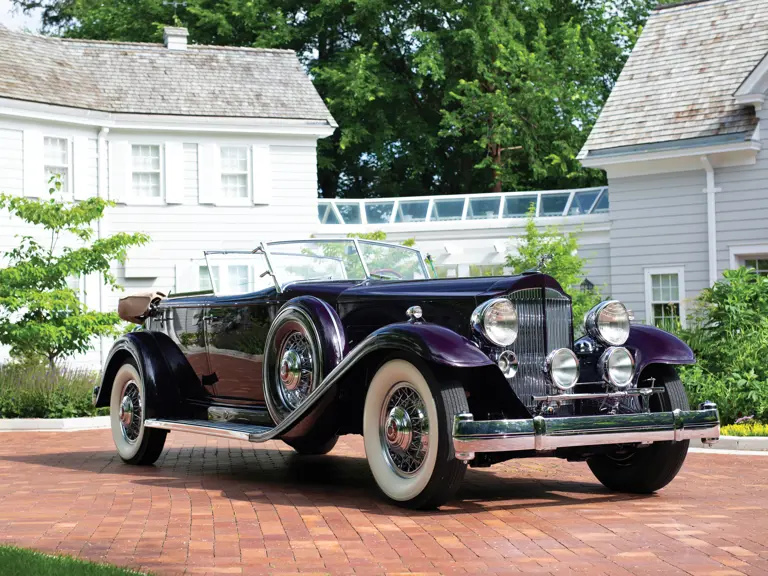
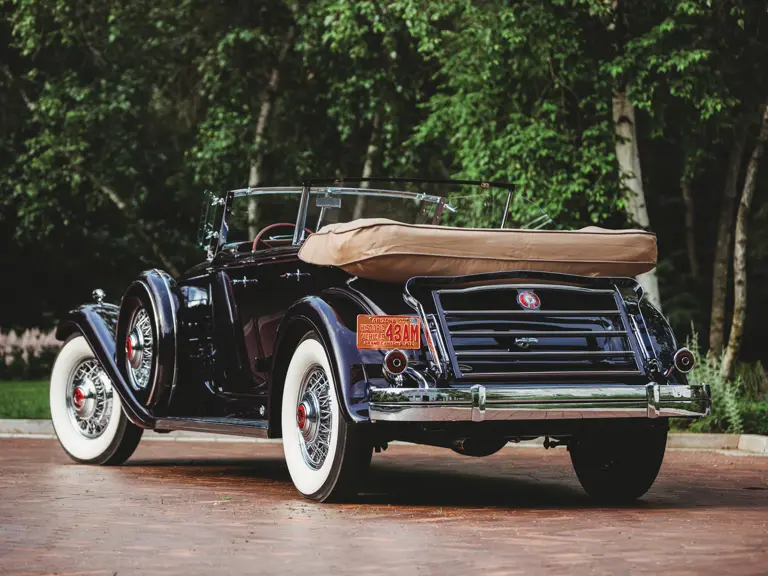
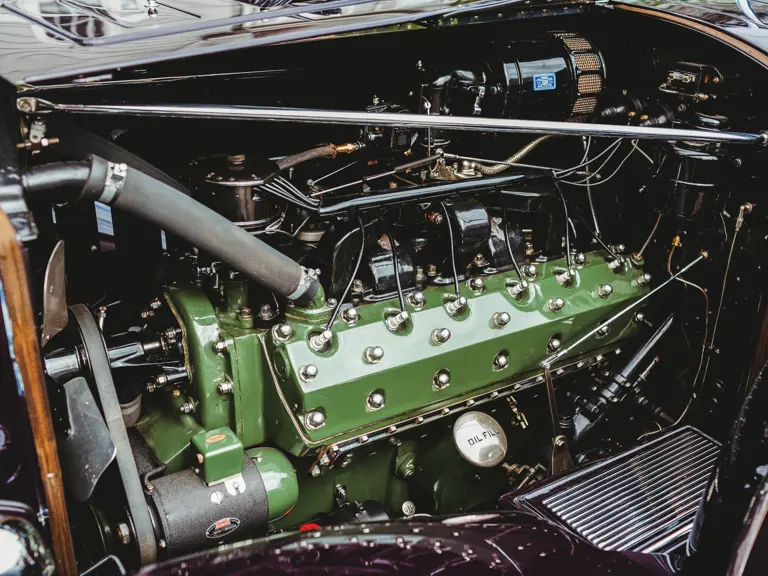

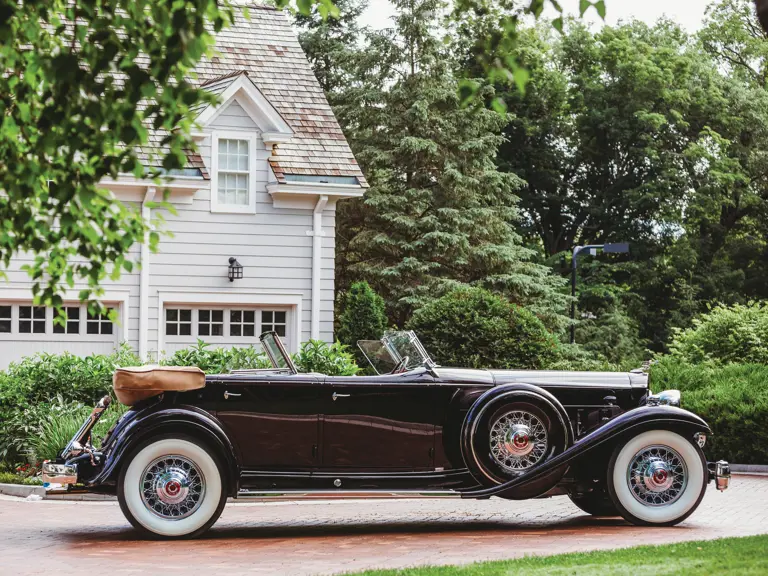
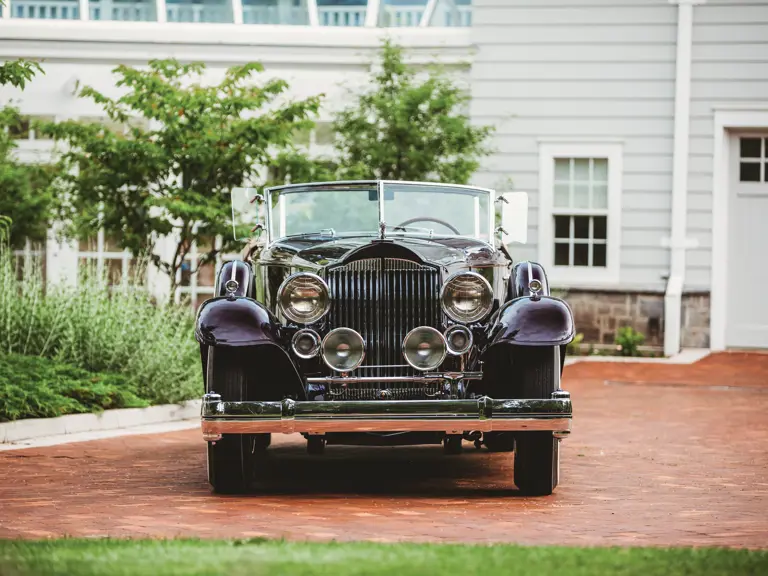
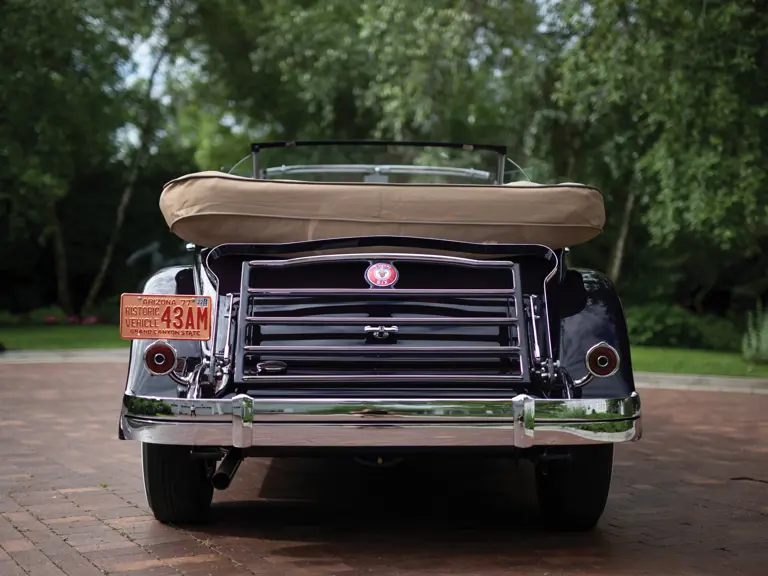
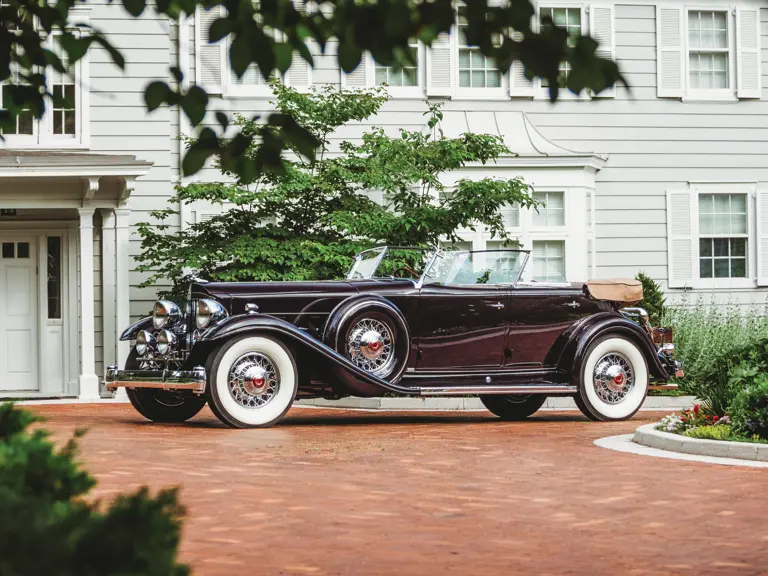
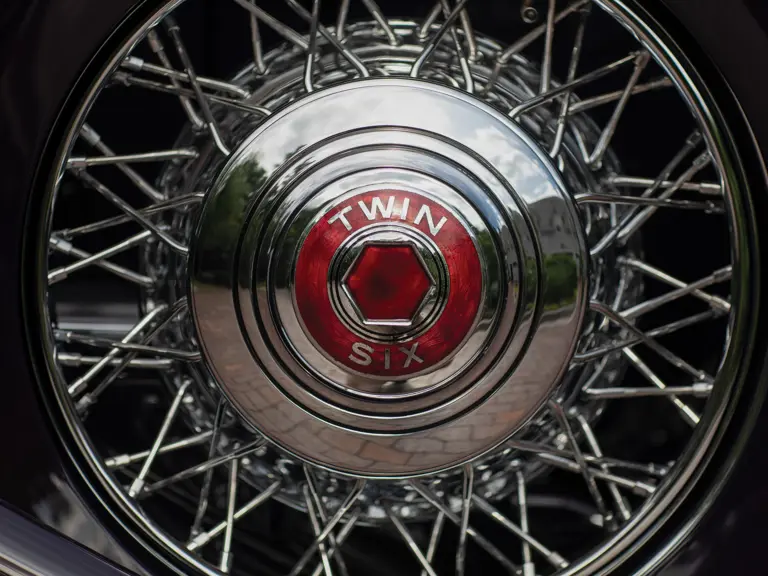
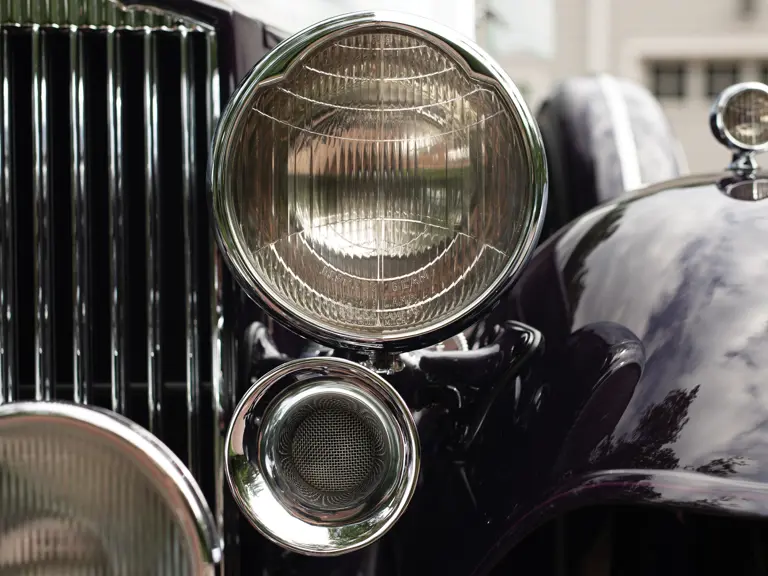
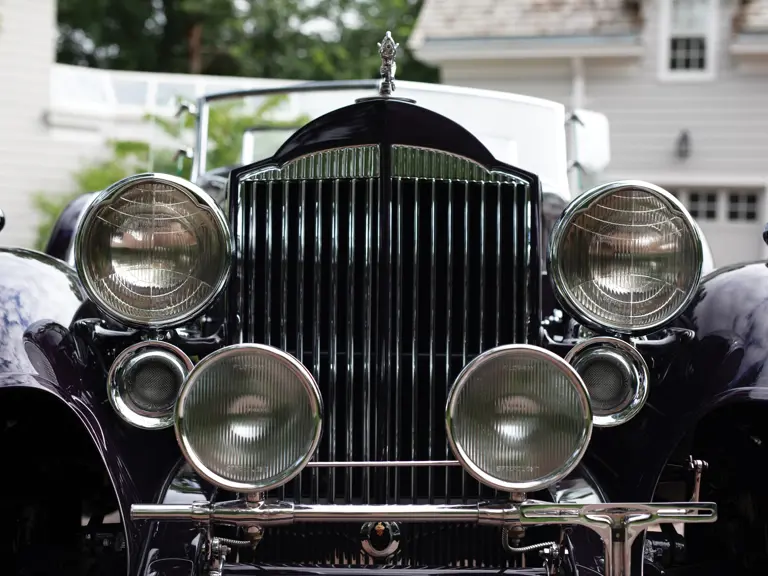
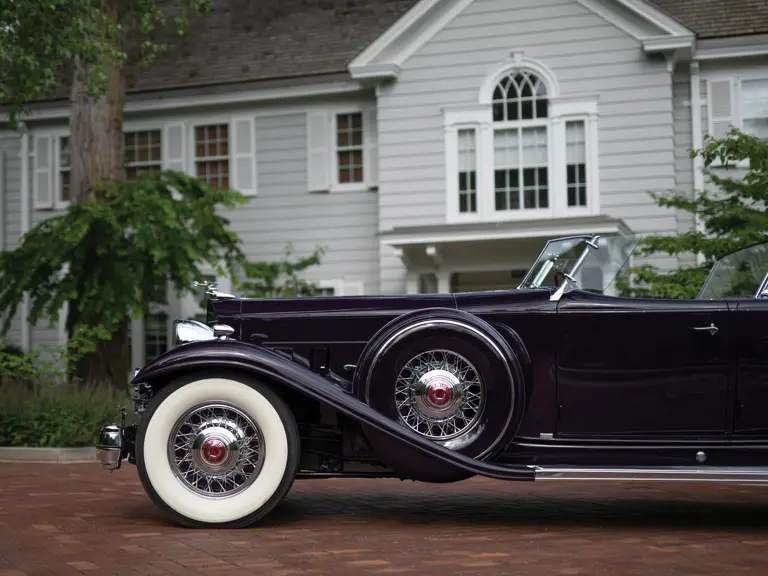

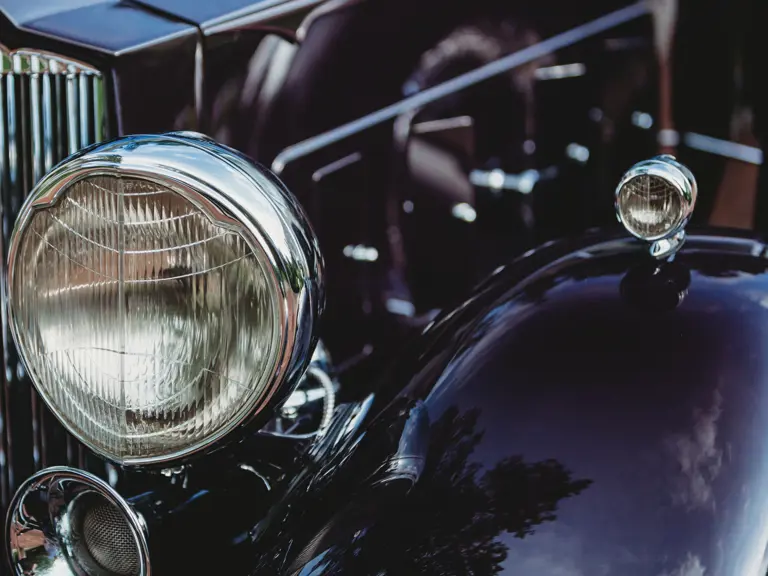
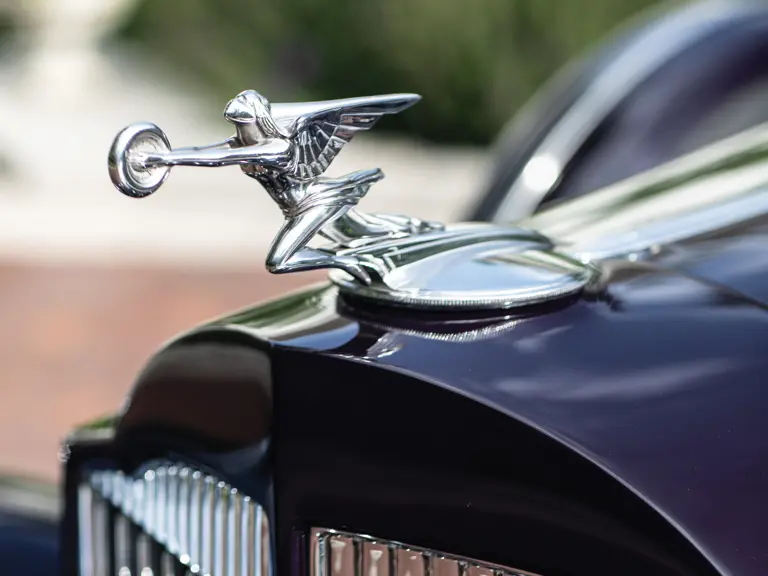
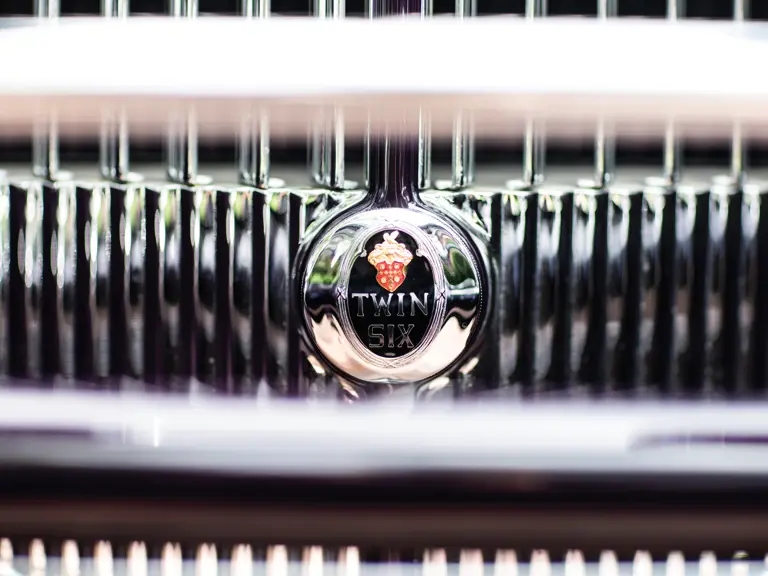
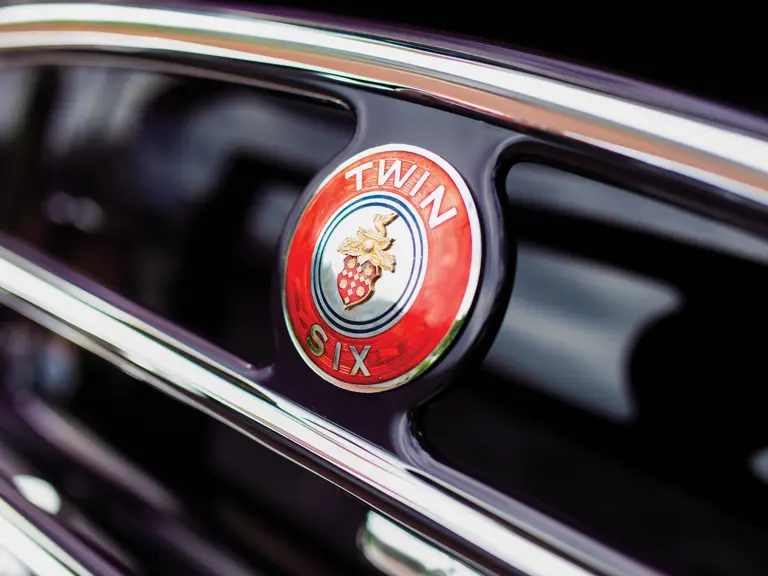
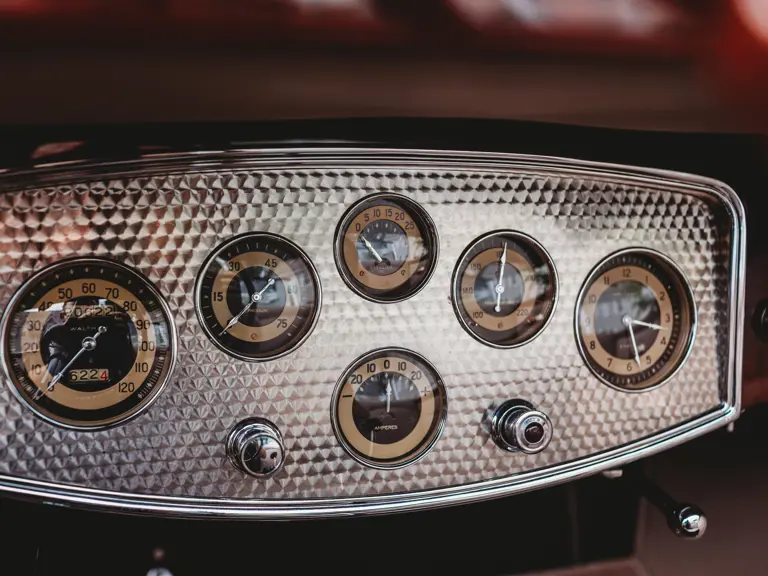

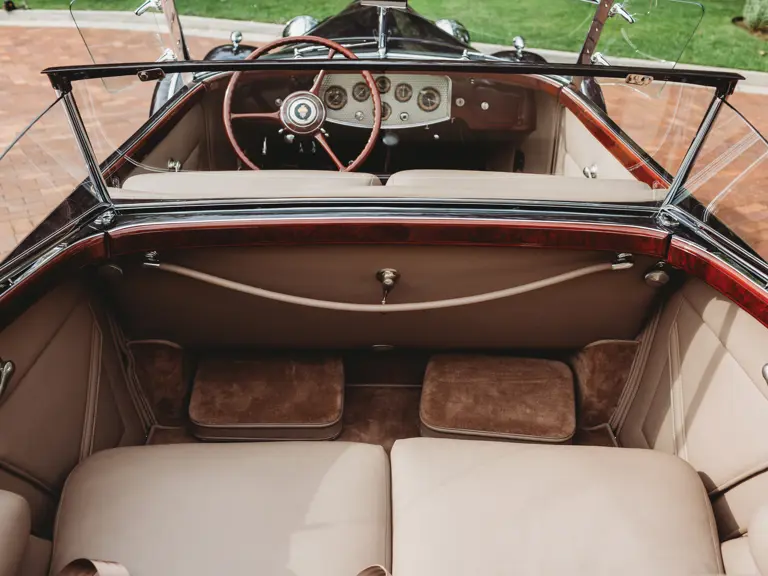
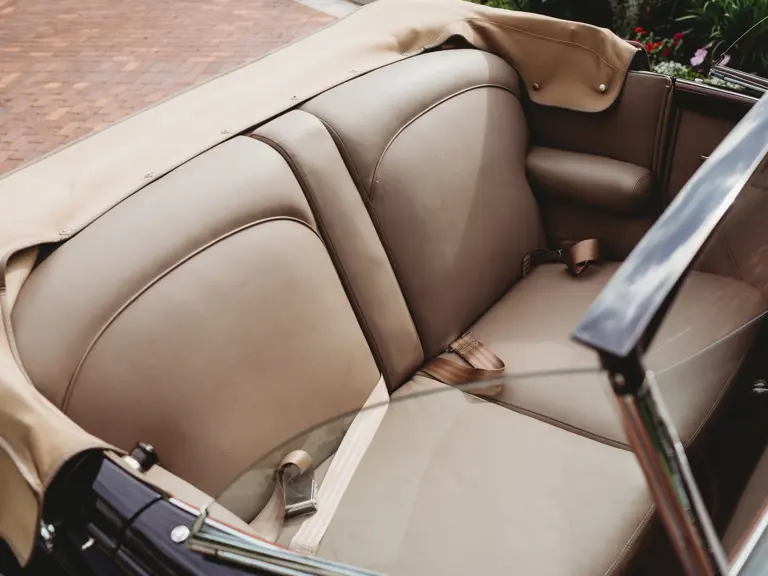
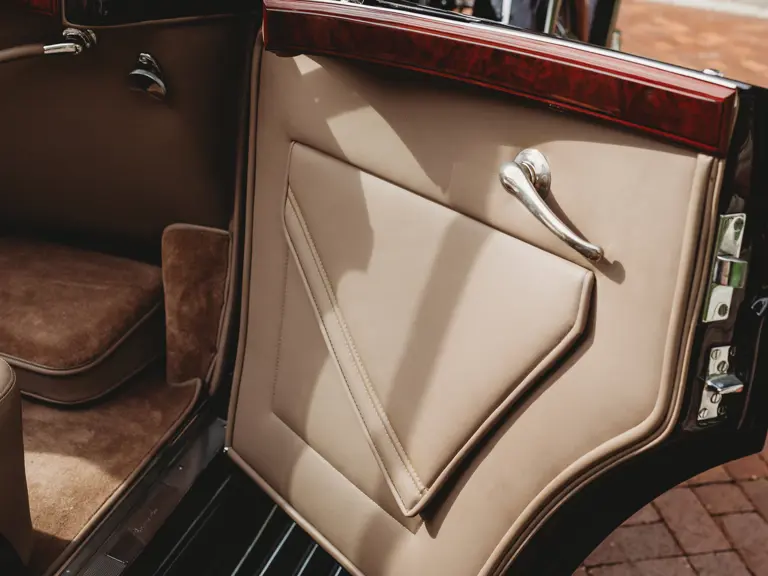
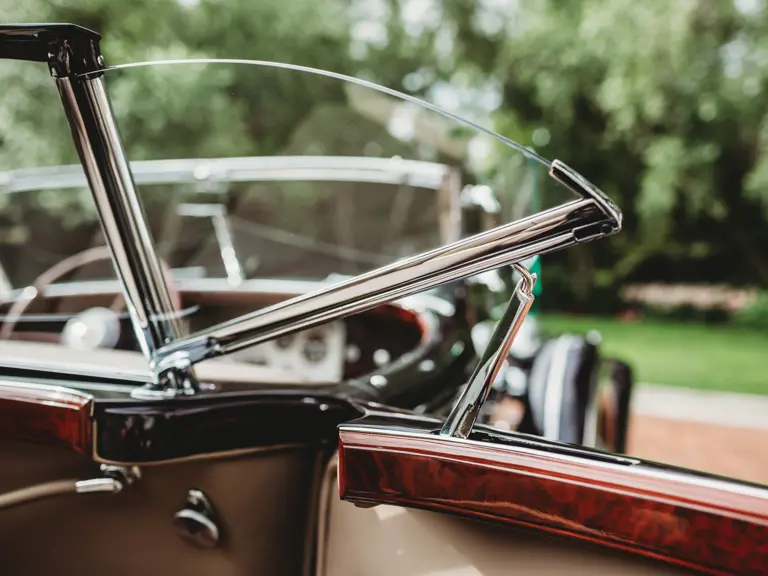
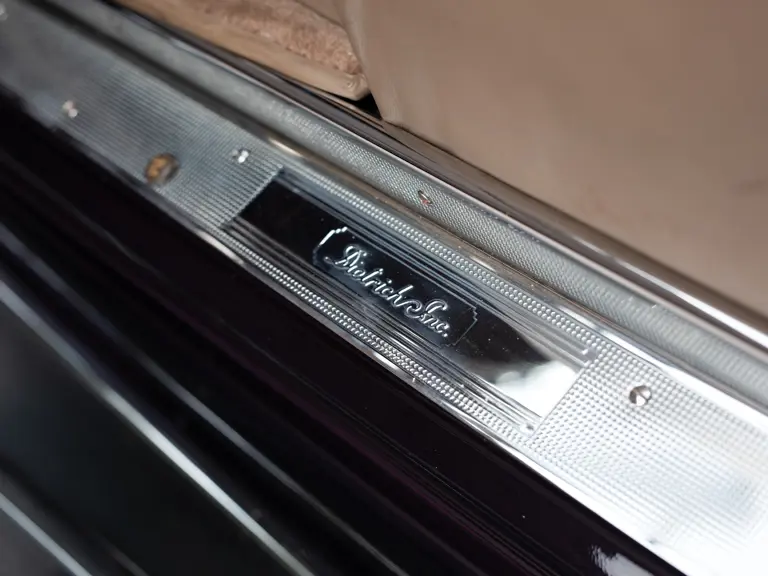
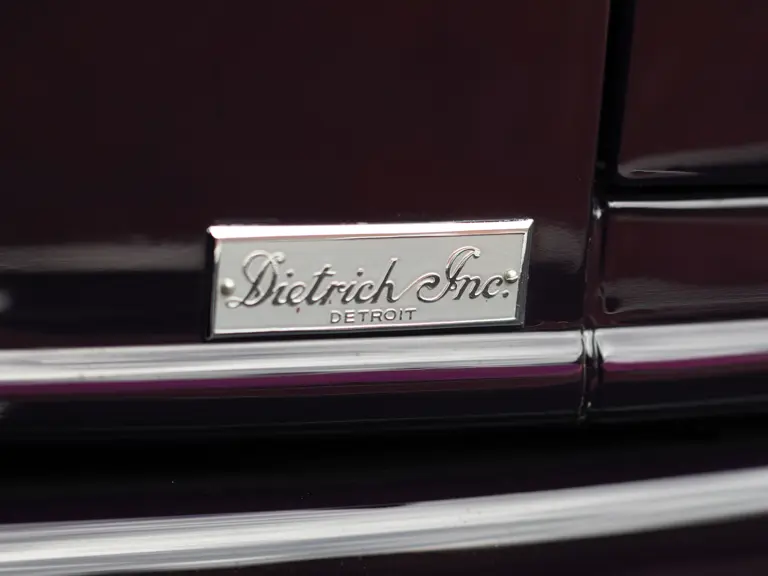
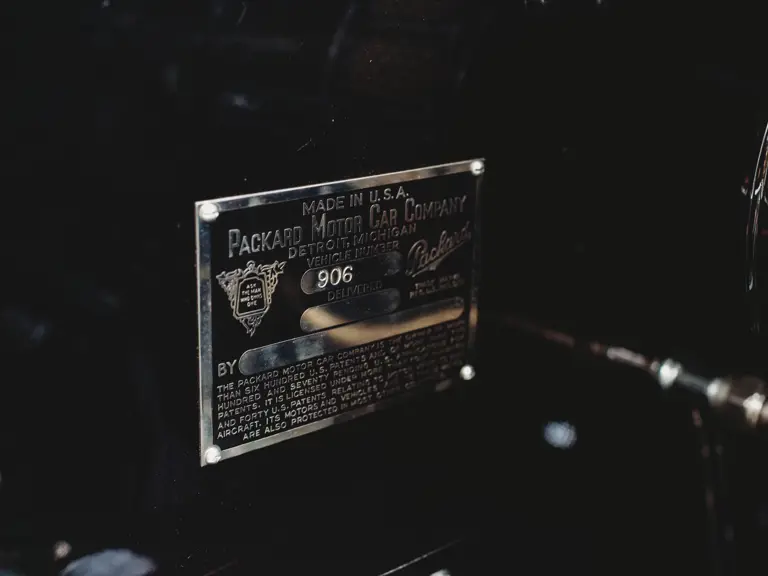

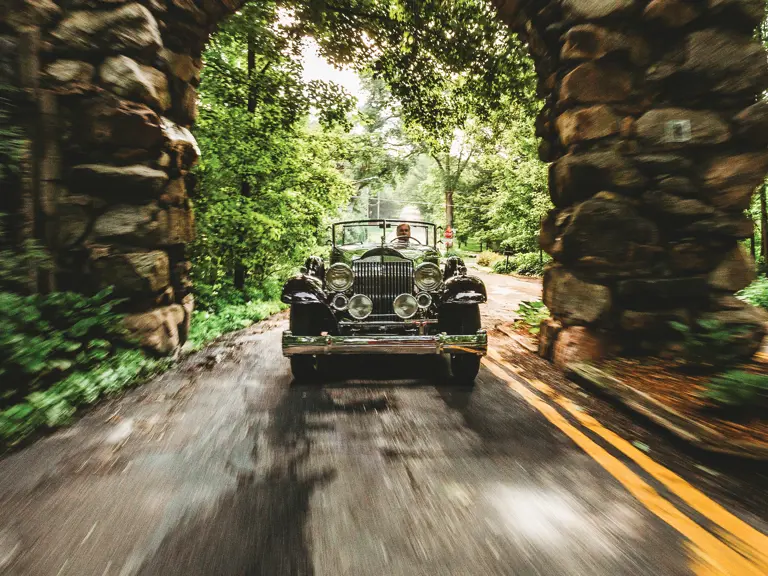

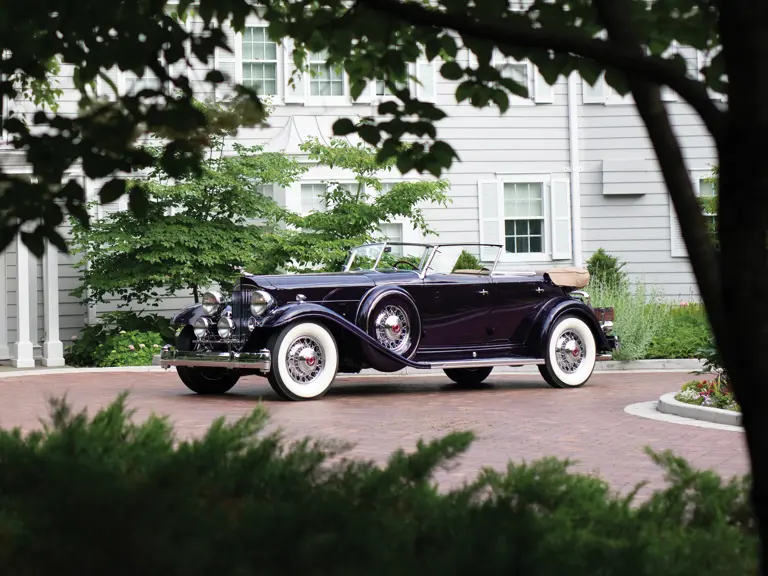

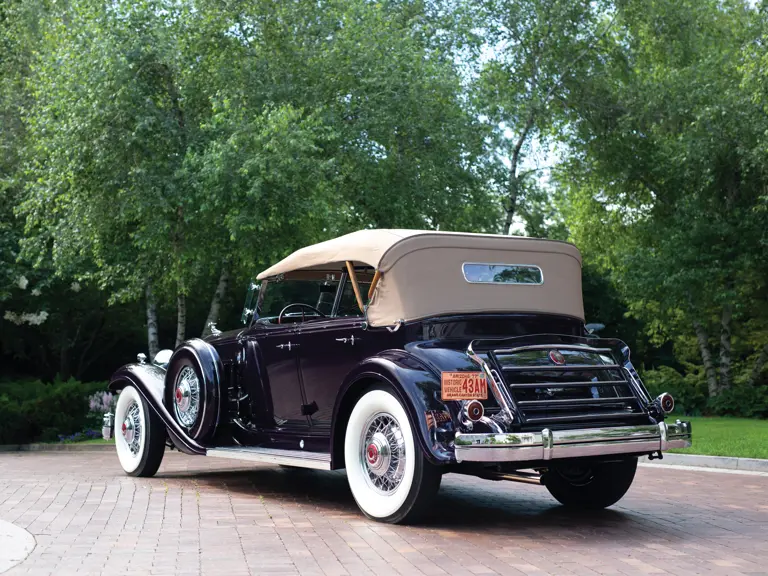
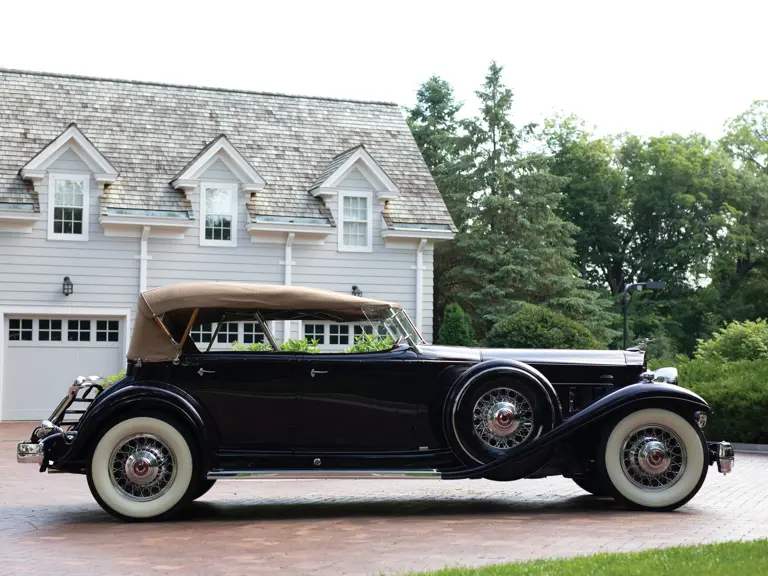
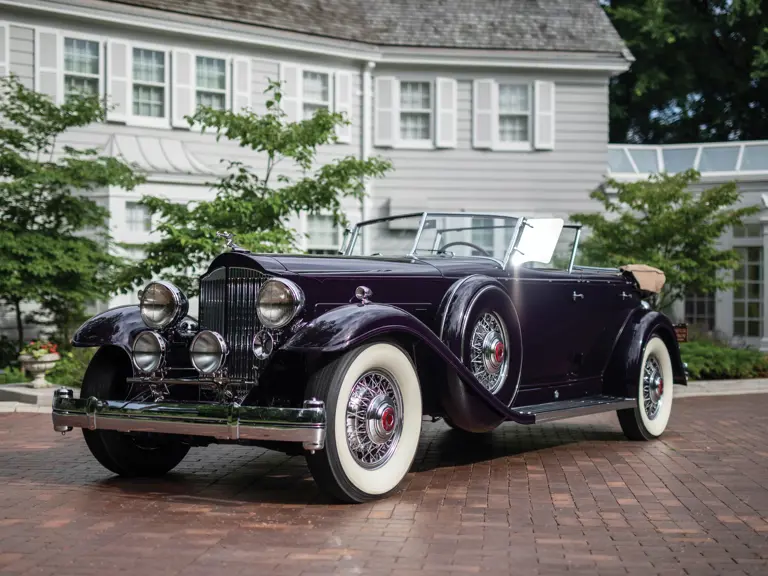

 | Monterey, California
| Monterey, California

